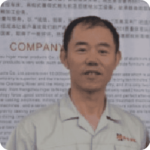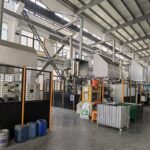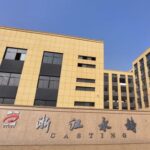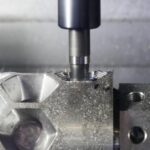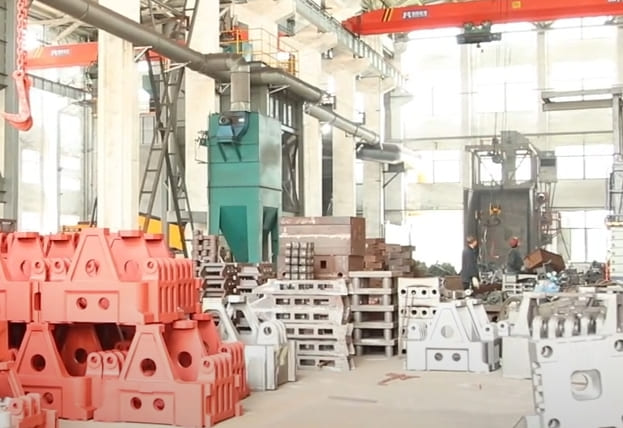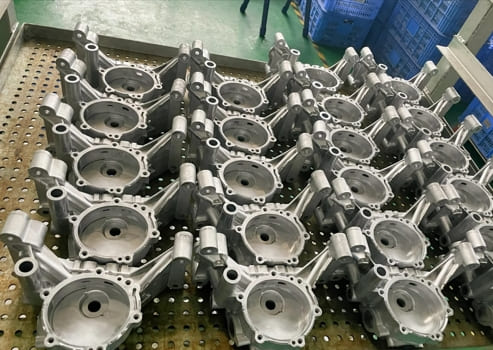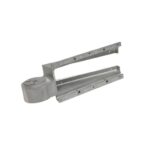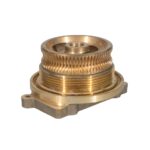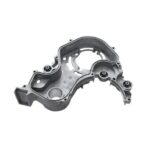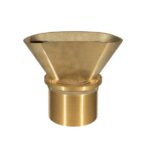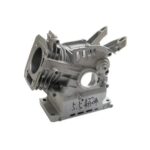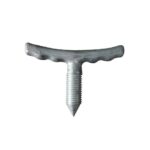I’ve powder-coated more housings than I’ve had hot dinners, and the lesson is always the same: thickness is goldilocks territory. Too thin and salt fog creeps under the film; too thick and orange-peel, stripped threads, or jammed press-fits ruin an otherwise perfect casting. The data below come from thousands of coupon pulls, monthly salt-spray audits, and more “why did this blister?” meetings than I dare count.
Industry Standards & Typical Thickness Ranges
A film gauge reading means nothing without a target anchored in ASTM D7091 or ISO 2360. Those standards set the metrology rules; experience sets the range. In my shop we’ve proven that indoor parts look flawless at 40–60 µm, while outdoor enclosures live happily past 1 000 h salt-spray at 60–80 µm. Only chemical-wash-down gear—aquaculture pumps, food mixers—pushes us to 90–110 µm, and we run extra gloss panels to be sure texture stays silky.
How Die-Cast Surface Characteristics Influence Film Build
Aluminum die-castings aren’t rolled sheet; microscopic gas pockets hide below the skin. If you shoot less than 50 µm, those pores can vent during cure and seed pinholes the first time the part meets sea air. Conversely, thick housings soak oven heat and need longer dwell to cross-link the polyester. Ignore that, and the surface chalks before the warranty card hits the inbox. Sharp ribs create Faraday “shadow zones,” so you can measure 80 µm on the face and only 45 µm in the root—unless you tweak gun voltage and spray angle.
Performance vs Thickness: Finding the Sweet Spot
| Property Tested | < 40 µm | 60–80 µm (Sweet Spot) | > 120 µm |
|---|---|---|---|
| Salt-spray to first blister (ASTM B117) | ≤ 250 h | 1 000 h + | 1 200 h |
| Impact flex (ISO 6272, 2 mm grit) | Fair dents | Good—no cracks | Brittle edge chips |
| Gloss shift after 1 000 h UV (Δ60° GU) | 8–10 | 3–5 | 8–12, orange-peel risk |
| Assembly clearance on Ø10 mm fit | Excellent | Pass | Fail—interference |
| Powder cost index vs 70 µm baseline | 0.7 × | 1.0 × | 1.2 ×—overspray waste |
Measurement Methods & QA Frequency
Magnetic-induction gauges read non-ferrous substrates to ±1 µm; I train operators to zero on a bare coupon every color change. Production runs get one coupon per rack and spot checks every 50 parts. We also map the oven with nine calibrated probes each quarter—an 8 °C hot spot can spoof thickness by 10 µm.
Common Over-Thickness Failure Modes
- Orange peel on 300 mm panels—customers call it “rust under paint,” but it’s just too much film.
- Edge bulges that crush gaskets, causing IP-rating leaks.
- Thread seizure after coat—M6 becomes M5.6, torque wrench swears.
Process Tips to Hit Target Film Build
- Tune gun voltage (70–80 kV) and powder flow to cut Faraday drop-off.
- Two-pass micro builds—first wetting pass at 40 µm, second at 25 µm—fill deep cavities evenly.
- Balance oven zones so 3 mm ribs don’t over-bake while 15 mm bosses finally gel.
Case Snapshot — Saving 120 kg Powder per Quarter on Outdoor Enclosures
A telecom customer spec’d 100 µm across the board. Salt-spray tests showed the same 1 000 h life at 70 µm. We rewrote the spec, trimmed average build by 30 µm, and powder consumption fell 15 % (≈ 120 kg/quarter). The line now runs an extra shift before the next warehouse reorder.
Real-world data say 60–80 µm is the goldilocks zone for most die-cast aluminum: thick enough to seal pores, lean enough to keep gloss, fit, and cost in line. Want the thickness-spec template and my QC checklist? Email yongzhucasting@gmail.com—I’ll send the files and a quick guide to calibrating your gauges before tomorrow’s shift.
Quick FAQ
Will thicker powder always improve corrosion life?
Only up to ~110 µm; beyond that, solvent out-gassing and poor cure can negate any benefit.
Do textured powders need more film?
Yes—add 5–10 µm to ensure the texture valleys still meet minimum build.
Can I combine powder with pre-anodize for marine parts?
Absolutely—20 µm anodize base plus 60 µm powder doubles barrier life in ASTM B117.
Searching for High-Quality for Cast Aluminum Parts Supplier?
You’ve come to the right place! Yongzhu Casting is a certified die casting manufacturer with over 20 years of expertise in the industry.
We have successfully completed numerous die casting projects for Aluminum casting parts, particularly in your industry.

Zhejiang Yongzhu Casting Technology Co., Ltd.
Location: Zhejiang, China
Company type: Manufacturers, Producers, Wholesalers
Year Founded: 2004
Main Products: Aluminium die casting, Mold Making, Die Casting, Sand Casting, Gravity Casting
Leading Chinese producer Yongzhu Casting is formerly known as Hangzhou Higer Metal Products Co., Ltd., was established in 2004.
With 20 years of experience in the industry, we are a specialized manufacturer in Aluminum casting and Machining.
Our products are widely used in various applications such as Automotive, Energy, Lighting, Medical, Home Furnishings, Machinery & Equipment etc. Below are our advantages:
Design Review & DFM Support
Our professionals will evaluate your designs and provide suggestions for cost savings. Additionally, we offer Design for Manufacturing (DFM) assistance and conduct mold flow analyses to facilitate efficient production.
State-of-the-Art Manufacturing Equipment
Our facility is equipped with advanced hot-chamber and cold-chamber die casting machinery for aluminum and zinc production.
We also utilize high-precision CNC machines in a temperature-controlled workshop, featuring 3-Axis, 4-Axis and 5-Axis setups to manage any project you have.
Rigorous Quality Control Measures
Our dedicated quality control team ensures that all parts meet the highest standards of quality and consistency. We employ high-accuracy measurement instruments, including CMM, spectrometers, and X-ray detectors.
Comprehensive Surface Treatment Options
We provide a variety of surface finishing techniques for your precision die casting components. Our in-house services include cleaning, polishing, anodizing, shot blasting, and painting.
Flexible Project Acceptance
While larger manufacturers often shy away from low-volume projects, and smaller ones may struggle with quality, Yongzhu Casting stands apart. We prioritize customer satisfaction and willingly accept high-mix, low-volume projects like yours.


